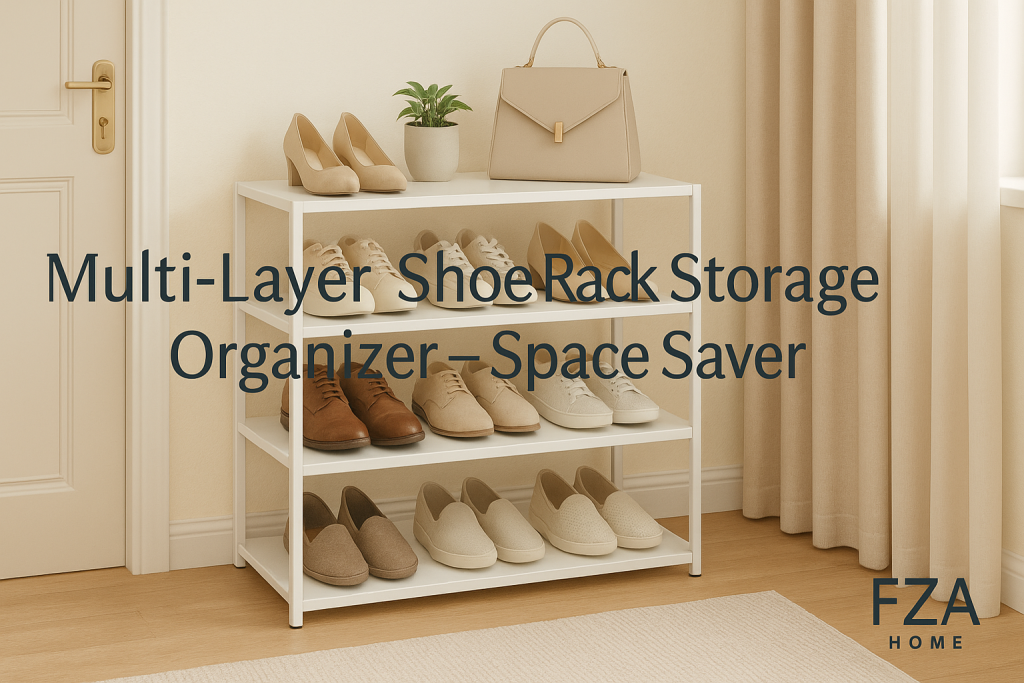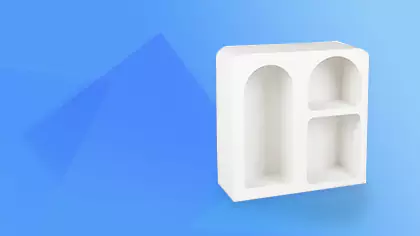If you’ve ever found yourself tripping over shoes in your hallway or digging through piles just to find that one pair, a multi-layer shoe rack storage organizer is the game changer you need. Simply put, it’s a storage unit designed to hold multiple pairs of shoes stacked vertically in layers, maximizing your available space while keeping your footwear neat and visible.
These organizers come in various forms—from simple open racks to closed cabinets with multiple shelves and compartments. The “multi-layer” aspect means they utilize vertical space smartly, stacking rows of shoes one above another, often with anywhere from 2 to 10 or more tiers.

The beauty of a multi-layer shoe rack is its versatility. They can be freestanding units in your entryway, slim racks tucked inside closets, or compact organizers that fit under beds. Materials range from wood and metal to plastic and fabric, allowing you to match your home’s style and storage needs.
By having a dedicated spot for every pair, these organizers prevent clutter from creeping in and make daily shoe selection easy and quick.
Why You Need One in Your Home
We all know how shoes can quickly become a chaotic mess, especially in homes with multiple family members or limited space. A multi-layer shoe rack is essential because it transforms chaos into order.
Imagine starting your day without the usual shoe hunt—your favorite sneakers or heels neatly lined up, easy to access and maintain. Not only does this save time, but it also protects your shoes from unnecessary damage caused by stacking or cramming them into closets or piles.
Furthermore, keeping shoes organized enhances the overall cleanliness and aesthetic of your home. An orderly entryway or closet creates a welcoming atmosphere and sets a positive tone for your day.
Plus, a shoe rack helps protect floors and walls from scuff marks and dirt tracked inside. Shoes stay off the floor, and mud or water can’t stain your carpets or tiles as easily.
In short, if you want a clutter-free, stylish, and functional home environment, a multi-layer shoe rack organizer is an indispensable investment.
Benefits of Using Multi-Layer Shoe Rack Organizers
Maximizing Vertical Space
One of the biggest advantages of a multi-layer shoe rack is its efficient use of vertical space. Rather than spreading your shoes out horizontally and taking up precious floor area, these racks stack shoes upwards, freeing up space below and around.
This is particularly useful in small homes, apartments, or shared bedrooms where every square foot counts. By going vertical, you maintain a tidy footprint while storing a large number of pairs.
Vertical storage also makes use of awkward or underutilized spots like narrow hallway corners, inside closets, or under benches, making these shoe racks perfect for optimizing all areas of your home.
Keeping Shoes Organized and Accessible
Multi-layer racks provide an organized display where you can easily see and reach each pair. Unlike piled-up shoes in a corner or shoved into boxes, having your collection layered neatly lets you grab what you need quickly.
Many shoe racks feature slanted shelves or open designs that hold shoes securely while showing their fronts or sides. This visibility is a game changer in daily routines, especially if you own a variety of footwear for different occasions.
Better organization also means your shoes maintain their shape and condition longer, since they aren’t crushed or distorted under weight. When shoes are properly stored, you extend their lifespan and keep them looking fresh.
Protecting Your Footwear
Another critical benefit is protection. Shoes are investments, and treating them well prolongs their usability. Multi-layer shoe racks prevent your shoes from piling up haphazardly, which can cause creases, scratches, or scuffing.
Keeping shoes off the floor reduces their exposure to dirt, moisture, and pet damage. Plus, many racks elevate shoes, allowing air to circulate, reducing odors and moisture buildup.
For high-end or delicate shoes, some multi-layer racks offer enclosed compartments or dust covers, providing an extra layer of protection from dust and environmental damage.
Types of Multi-Layer Shoe Racks
Wooden Shoe Racks
Wooden shoe racks offer a classic, sturdy option that blends well with many home decors. Typically made from solid pine, oak, or engineered wood, these racks provide durability and a warm aesthetic.
They come in various finishes—natural, stained, or painted—allowing you to match the rack with your room’s style. Some wooden racks feature closed shelving or drawer compartments for additional storage, while others have open slats or slanted shelves.
The downside is that wooden racks tend to be heavier and less portable than other materials. However, their robustness often means they last longer, making them a worthwhile investment.
Metal Shoe Racks
Metal racks are prized for their modern look, lightweight construction, and durability. Materials like stainless steel or powder-coated iron provide strength without bulk.
These racks often feature open wire designs, promoting air circulation and easy cleaning. Many models are foldable or adjustable, making them a great choice for renters or people who move frequently.
Metal racks are usually slim and stackable, ideal for narrow spaces. However, they might lack the warmth of wood and sometimes require floor protection to prevent scratching.
Plastic and Fabric Shoe Racks
Plastic and fabric shoe racks are budget-friendly, lightweight, and easy to assemble. Plastic racks often come with molded shelves or trays that resist moisture, making them ideal for wet climates or garage storage.
Fabric organizers tend to hang from closets or doors, providing multiple pockets or shelves to hold shoes without occupying floor space.
While these options aren’t as sturdy as wood or metal, their affordability and portability make them popular, especially in dorm rooms or temporary living spaces.
Rotating and Adjustable Shoe Racks
For those with large or frequently changing collections, rotating or adjustable shoe racks offer flexibility. Rotating racks spin 360 degrees, allowing access to all pairs without moving the entire unit.
Adjustable racks let you change shelf heights or configurations to accommodate different shoe types—from flat sandals to tall boots.
These high-tech or modular options often combine materials and designs to fit modern lifestyles, though they might come at a higher price point.
How to Choose the Right Multi-Layer Shoe Rack
Assessing Your Shoe Collection
Start by counting your shoes and noting the types. Do you mostly own sneakers, heels, boots, or casual flats? Different racks suit different needs. For example, tall boots require higher shelves, while flats fit well on slanted or narrow tiers.
Consider how often you rotate your footwear. If you like seasonal changes, an accessible, open design might work best. For long-term storage, enclosed racks or those with covers can help.
Also, think about the size and shape of your shoes. Wide or bulky shoes may need more space per slot.
Space and Size Considerations
Measure the area where you want to place your shoe rack. Account for door openings, foot traffic, and nearby furniture.
If space is tight, slim or vertical racks with many layers are optimal. If you have a large closet or mudroom, bigger units or modular racks that expand might be ideal.
Keep in mind ceiling height and the practicality of reaching top shelves—make sure it’s comfortable for daily use.
Style and Material Preferences
Choose a material and style that complements your existing decor. Wooden racks fit well with traditional, rustic, or Scandinavian interiors. Metal works great in industrial, modern, or minimalist homes.
Color matters too—natural wood tones offer warmth, while painted or metal finishes can add contrast or blend in with your room.
Durability, portability, and maintenance requirements also influence the best material for you.
Tips for Organizing Your Shoe Rack
Categorizing Your Shoes
Organize by type (sneakers, sandals, boots), frequency of use, or occasion. Keep daily wear shoes at eye level or easiest reach.
Grouping shoes together speeds up your morning routine and keeps your collection tidy.
Seasonal Rotation
Rotate shoes seasonally to save space and protect footwear. Store off-season shoes in boxes or less accessible shelves.
Use this time to clean, condition, and repair shoes before storing them away.
Maintaining Cleanliness
Regularly clean your shoe rack and shoes. Dust racks weekly and wipe surfaces with appropriate cleaners.
Let shoes dry before placing them back, especially after rainy days, to prevent odors and damage.
Maximizing Your Space with Multi-Layer Shoe Rack Storage Organizers
Utilizing Underutilized Areas
One of the biggest advantages of multi-layer shoe racks is their ability to fit into spaces that often go unused or cluttered. For example, the area under beds, staircases, or even bathroom corners can become functional storage zones with the right shoe rack. Slim, stackable designs can slide neatly under beds, offering discreet storage without sacrificing accessibility.
Similarly, narrow hallways or entryways are prime candidates for vertical shoe racks that don’t intrude on walking space. Corner shoe racks are specially designed to fit snugly, turning previously awkward nooks into organized spots. By creatively deploying your shoe racks in these places, you reclaim floor space while keeping your shoes within reach.
Combining Shoe Storage with Other Organizational Solutions
Multi-layer shoe racks often work well alongside other storage units, like coat racks, benches with storage compartments, or shelving systems. For instance, placing a shoe rack under a bench in your entryway creates a dual-purpose area where you can sit down to put on shoes and stow them away immediately after.
Closet systems with built-in shoe racks maximize vertical space and keep everything streamlined. Some units even combine drawers for socks or accessories with shoe shelves, giving you a complete dressing area. Modular racks let you customize configurations based on your needs—adding tiers, hooks, or cubbies for a tailored fit.
Mixing and matching these solutions keeps your space tidy, functional, and personalized.
Creative Uses for Multi-Layer Shoe Rack Organizers
Beyond Shoes: Versatile Storage Options
While designed for shoes, multi-layer racks can store a surprising variety of other items. Think of using them for handbags, hats, or small boxes containing scarves and gloves. In children’s rooms, they’re perfect for organizing toys, books, or sports gear.
In craft rooms or home offices, shoe racks hold supplies like yarn, fabric, or stationery in an accessible, organized way. Garages benefit from shoe racks storing gardening tools, spray cans, or car cleaning supplies.
The layered structure and open design make these racks highly adaptable. With a bit of creativity, you can repurpose your shoe organizer to tackle clutter anywhere in your home.
Decorative and Display Functions
Multi-layer shoe racks can also serve decorative purposes. Stylish racks made from wood or metal look great as open shelving units for plants, framed photos, or collectibles.
By mixing shoes with decorative items, you soften the purely functional aspect of the rack and make it part of your room’s personality. Add fairy lights, small art pieces, or seasonal decor to make the shoe rack a focal point rather than just storage.
This dual function helps you maintain organization while enhancing your home’s aesthetic.
DIY Multi-Layer Shoe Rack Storage Organizer Ideas
Building Your Own Customized Rack
For DIY enthusiasts, building a multi-layer shoe rack is a rewarding project that lets you tailor size, materials, and design to your exact needs. Simple designs use wooden crates, pallets, or cinder blocks stacked to create shelves.
You can paint or stain the wood to match your decor, add casters for mobility, or even incorporate fabric bins for extra storage. Repurposed furniture like old bookshelves or vintage ladders also make excellent shoe organizers with minimal modification.
DIY racks offer cost savings and customization but require some basic carpentry skills and tools.
Creative Upcycling and Repurposing
If you want a more eco-friendly approach, consider upcycling items around your home. An unused wine crate can hold a few pairs, while hanging shoe organizers can be made from old fabric or mesh.
Old ladders, wooden pallets, or even shipping crates become unique shoe racks with a little sanding and paint. These ideas give your home a one-of-a-kind look while supporting sustainable living.
Maintaining Your Multi-Layer Shoe Rack Storage Organizer
Regular Cleaning and Care
Dust and debris accumulate on shoe racks just like any furniture. Regularly wiping down shelves, especially in open designs, keeps your shoes and rack fresh. For wooden racks, use wood polish to maintain shine and protect surfaces.
Fabric or plastic organizers may require spot cleaning or gentle washing. Metal racks can be wiped with a damp cloth and dried thoroughly to prevent rust.
Preventing Overload and Damage
Avoid overcrowding your shoe rack, which can cause shelves to sag or shoes to become misshapen. Stick to recommended weight limits, and distribute shoes evenly across tiers.
Rotate shoes regularly to prevent wear in the same spots and keep your collection fresh.
Conclusion: Organize and Elevate Your Space with a Multi-Layer Shoe Rack Storage Organizer
A multi-layer shoe rack storage organizer is more than a storage solution—it’s an upgrade to your home’s functionality and style. By efficiently using vertical space, protecting your footwear, and keeping everything accessible, these organizers solve one of the most common household clutter problems.
With countless designs, materials, and customizable options, there’s a perfect shoe rack for every home and lifestyle. Whether you’re seeking durability, portability, or style, investing in a multi-layer shoe rack helps you maintain a tidy, welcoming, and organized environment.
Embrace the simplicity and satisfaction of knowing exactly where every pair of shoes lives. Your mornings become smoother, your space neater, and your shoes last longer—all thanks to the humble, yet powerful, multi-layer shoe rack storage organizer.
FAQs
1. How many pairs of shoes can a multi-layer shoe rack hold?
Depending on the size and number of tiers, racks can hold anywhere from 6 to over 50 pairs.
2. Are multi-layer shoe racks suitable for boots?
Yes, some racks have adjustable heights or dedicated spaces for taller footwear like boots.
3. Can I use a multi-layer shoe rack in humid areas?
Metal or plastic racks are best for humid environments; wooden racks need proper sealing.
4. How do I prevent my shoe rack from tipping over?
Ensure the rack is stable, evenly loaded, and consider anchoring taller units to walls for safety.
5. Are multi-layer shoe racks easy to assemble?
Most come with straightforward instructions and require minimal tools, making them easy to set up.











